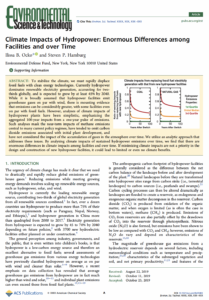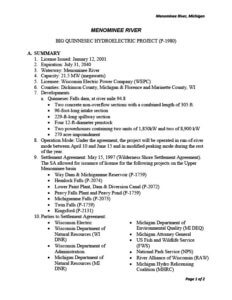On the Klamath, Dam Removal Alone is Not Enough
Though a century of damming has had one of the largest impacts on the health of the Klamath River, its ecosystems, and the fish and wildlife that depend on them, they are not the only obstacles the river faces on the road to recovery. It is difficult to understate the ecological significance of the four dam removals on the Klamath River: with over 400 vertical feet scheduled for removal in 2023 and 2024, its sheer scale is why dam removal is such an important start to the river’s recovery. Now that the dam removals are underway, we are shifting our focus forward to improve the health the of the entire watershed, from the meadows of the Upper Klamath downstream to the estuary at the Pacific and the tributaries in between. Below are three post-removal restoration priorities that are key to watershed-wide recovery.
- Establishing environmental flows: Environmental flows (water allocated for ecosystems, rather than directly for human use) are a big deal in the Klamath and its tributaries. An undammed river is not necessarily a wild river, and we need to designate water for the environment to enhance the health of our ecosystems. In the Klamath watershed, some of the undammed rivers like the Scott (which is vital for native fish and wild salmon) run dry year after year because of agricultural and municipal water use. No single person or place is responsible for diverting the river; but together, all these small diversions are creating severely degraded and unhealthy rivers. Setting environmental flows help people know when and where water is available for diversions, and when and where it is critical for a healthy river.
- Restoring the Upper Klamath: Though four major dams are being removed, the Klamath River will not be free-flowing. The upper river remains dammed, with Keno Dam and Link River Dam still in place. The water that runs through these dams is managed to maintain a steady water supply for agricultural water users and wildlife refuges, and the landscape around the river has mostly been converted for agriculture use. These developments have eliminated most of the wetlands in the headwaters that were crucial for shallow groundwater storage and improved water quality in the river, and many waterways run through many active working ranches and farms. While land management and water management have improved substantially from earlier practices, the damage done in previous decades remains. We need to scale stream restoration and habitat restoration so we can promote watershed-wide river health. Some of this work has already started, but more work remains. By working with landowners and rightsholders to reconcile how people live and work with rivers, we can provide a model of healthy rivers and healthy communities
- Restoring the Klamath’s Headwaters: The headwaters of the Klamath extend far beyond upper Klamath region in Oregon. The headwaters of tributaries like the Shasta, Scott, Salmon, and Trinity rivers play a vital role in the overall health and biodiversity of the Klamath watershed. Healthy headwaters create healthy rivers, and as the Klamath flows downstream, it draws water from the surrounding landscape. But with larger and more destructive fires fueled by climate change, water quality can be seriously impacted. As wet mountain meadows dry, they lose the capacity to store and filter water. These processes are critical to river health. We are taking the lessons learned from our meadow restoration and forestry management work in the Sierra Nevada with the Sierra Meadows Partnership (SMP) and integrating them into our work in the Klamath. American Rivers has joined the core team of the Klamath Meadows Partnership (KMP), a coalition dedicated to scaling the sort of work that can build towards resilience in Klamath’s headwaters and a more resilient future across the region.

Until now, American Rivers has trained our focus on dam removal, and for good reason. Now we are transitioning to the next chapter: post-dam removal river restoration. This work truly takes a village and depends on the combined efforts of Tribes , private philanthropy, the state and federal government, NGOs, private landowners, and impacted communities. To learn more about how to get involved as we look towards our collective future, please reach out to Pat Callahan at pcallahan@americanrivers.org.
This post originally appeared at americanrivers.org.


